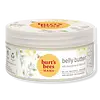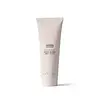What's inside
What's inside
 Key Ingredients
Key Ingredients

 Benefits
Benefits

 Concerns
Concerns

 Ingredients Side-by-side
Ingredients Side-by-side

Water
Skin ConditioningHelianthus Annuus Seed Oil
EmollientGlycerin
HumectantCocos Nucifera Oil
MaskingCetyl Alcohol
EmollientPrunus Amygdalus Dulcis Oil
Skin ConditioningSucrose Stearate
EmollientButyrospermum Parkii Butter
Skin ConditioningGlycine Soja Oil
EmollientSimmondsia Chinensis Butter
Skin ConditioningTheobroma Cacao Seed Butter
EmollientTocopherol
AntioxidantXanthan Gum
EmulsifyingLactic Acid
BufferingMagnesium Aluminum Silicate
AbsorbentGlyceryl Laurate
EmollientSodium Stearoyl Lactylate
EmulsifyingSucrose Polystearate
EmollientPhenoxyethanol
PreservativeWater, Helianthus Annuus Seed Oil, Glycerin, Cocos Nucifera Oil, Cetyl Alcohol, Prunus Amygdalus Dulcis Oil, Sucrose Stearate, Butyrospermum Parkii Butter, Glycine Soja Oil, Simmondsia Chinensis Butter, Theobroma Cacao Seed Butter, Tocopherol, Xanthan Gum, Lactic Acid, Magnesium Aluminum Silicate, Glyceryl Laurate, Sodium Stearoyl Lactylate, Sucrose Polystearate, Phenoxyethanol
Water
Skin ConditioningIsopentyldiol
HumectantJojoba Esters
EmollientCetyl Alcohol
EmollientCetearyl Alcohol
EmollientStearyl Alcohol
EmollientTheobroma Cacao Seed Butter
EmollientRetinol
Skin ConditioningSqualane
EmollientTocopherol
AntioxidantCaprylic/Capric Triglyceride
MaskingXanthan Gum
EmulsifyingCetearyl Glucoside
EmulsifyingHydroxyacetophenone
Antioxidant1,2-Hexanediol
Skin ConditioningCaprylyl Glycol
EmollientHydrogenated Lecithin
EmulsifyingPolyglyceryl-10 Dioleate
EmulsifyingCitric Acid
BufferingSodium Gluconate
Skin ConditioningGlycine Soja Oil
EmollientPolyglyceryl-10 Dipalmitate
EmollientPhenoxyethanol
PreservativeErgothioneine
AntioxidantWater, Isopentyldiol, Jojoba Esters, Cetyl Alcohol, Cetearyl Alcohol, Stearyl Alcohol, Theobroma Cacao Seed Butter, Retinol, Squalane, Tocopherol, Caprylic/Capric Triglyceride, Xanthan Gum, Cetearyl Glucoside, Hydroxyacetophenone, 1,2-Hexanediol, Caprylyl Glycol, Hydrogenated Lecithin, Polyglyceryl-10 Dioleate, Citric Acid, Sodium Gluconate, Glycine Soja Oil, Polyglyceryl-10 Dipalmitate, Phenoxyethanol, Ergothioneine
 Reviews
Reviews

Ingredients Explained
These ingredients are found in both products.
Ingredients higher up in an ingredient list are typically present in a larger amount.
Cetyl Alcohol is a fatty alcohol. Fatty Alcohols are most often used as an emollient or to thicken a product.
Its main roles are:
Though it has "alcohol" in the name, it is not related to denatured alcohol or ethyl alcohol.
The FDA allows products labeled "alcohol-free" to have fatty alcohols.
Learn more about Cetyl AlcoholGlycine Soja Oil comes from the soybean. Glycine Soja is native to eastern Asia.
Soybean oil is an emollient. It is rich in antioxidants and fatty acids including palmitic, stearic, oleic, and linoleic acids.
As an emollient, the fatty acids in soybean oil helps keep your skin soft and hydrated. It does so by creating a film on top that traps moisture in.
Soybean oil is also rich in vitamin E, a potent antioxidant. Vitamin E is also anti-inflammatory and provides a soothing effect.
Studies show soy may help fade hyperpigmentation from UVB. It does so by disrupting the melanin process from UVB induced skin inflammation.
This ingredient may not be malassezia folliculitis, or fungal-acne, safe.
Soybeans are rich in proteins and are part of the legume family. Foods made with soybeans include tofu, soymilk, edamame, miso, and soy sauce.
Learn more about Glycine Soja OilPhenoxyethanol is a preservative that has germicide, antimicrobial, and aromatic properties. Studies show that phenoxyethanol can prevent microbial growth. By itself, it has a scent that is similar to that of a rose.
It's often used in formulations along with Caprylyl Glycol to preserve the shelf life of products.
Theobroma Cacao Seed Butter comes from the Theobroma cacoa, or Cacao tree. Cacao trees are native to tropical landscapes.
Like other plant butters, Cacao seed butter is an emollient. Emollients help soothe and soften your skin. By creating a barrier to trap moisture in, emollients help keep your skin hydrated.
Cacao seed butter contains antioxidants known as polyphenols. Antioxidants help fight free-radical molecules by stabilizing them. Unstable free-radicals may cause damage to your skin cells. Antioxidants may help with anti-aging.
Theobroma Cacao Seed Butter can be bad for acne prone skin.
Learn more about Theobroma Cacao Seed ButterTocopherol (also known as Vitamin E) is a common antioxidant used to help protect the skin from free-radicals and strengthen the skin barrier. It's also fat soluble - this means our skin is great at absorbing it.
Vitamin E also helps keep your natural skin lipids healthy. Your lipid skin barrier naturally consists of lipids, ceramides, and fatty acids. Vitamin E offers extra protection for your skin’s lipid barrier, keeping your skin healthy and nourished.
Another benefit is a bit of UV protection. Vitamin E helps reduce the damage caused by UVB rays. (It should not replace your sunscreen). Combining it with Vitamin C can decrease sunburned cells and hyperpigmentation after UV exposure.
You might have noticed Vitamin E + C often paired together. This is because it is great at stabilizing Vitamin C. Using the two together helps increase the effectiveness of both ingredients.
There are often claims that Vitamin E can reduce/prevent scarring, but these claims haven't been confirmed by scientific research.
Learn more about TocopherolWater. It's the most common cosmetic ingredient of all. You'll usually see it at the top of ingredient lists, meaning that it makes up the largest part of the product.
So why is it so popular? Water most often acts as a solvent - this means that it helps dissolve other ingredients into the formulation.
You'll also recognize water as that liquid we all need to stay alive. If you see this, drink a glass of water. Stay hydrated!
Learn more about WaterXanthan gum is used as a stabilizer and thickener within cosmetic products. It helps give products a sticky, thick feeling - preventing them from being too runny.
On the technical side of things, xanthan gum is a polysaccharide - a combination consisting of multiple sugar molecules bonded together.
Xanthan gum is a pretty common and great ingredient. It is a natural, non-toxic, non-irritating ingredient that is also commonly used in food products.
Learn more about Xanthan Gum